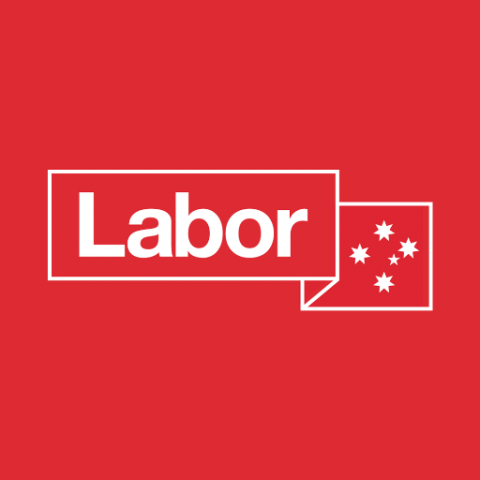Labor's next NBN plan is discussed in Business Spectator amidst concern that Labor is not prepared to put out its revised NBN plan until the final lead-up to the next election. Having found itself more right than wrong with the plan to move Australia to an all fibre access network can Labor capitalise on this?
Read the full article below
The National Broadband Network might be called many things but the suggestion at a recent Labor caucus meeting that its original NBN plan should be rebranded “the real NBN” is not one of the better ideas to come out of the political brainstorming session.
Rather than focus on spin Labor might want to tackle the tough questions that need to be answered before its revised NBN policy launch occurs in mid-2016. It’s not possible to wind back the clock so there's little to be gained by fixating on the past.
Labor would do well to remember that the Coalition’s Multi-Technology Mix (MTM) plan was sold to Australians using the slick phrase “Fast Affordable Sooner. The Coalition’s plan for a better NBN”, a promise that the Coalition is unlikely to deliver on. NBN is not going to be able to provide every Australian with a minimum of 25 Mbps by the end of 2016 and even completing the network by 2020 might be a struggle.
Trying to pitch a revised NBN plan five years into the promised ten year rollout could backfire and another proposed change in direction by Labor could end up antagonising the majority of Australians who want to see the rollout completed, irrespective of what is provided.
Opposition communications spokesman Jason Clare has indicated that Labor might adopt a two-step broadband plan and the first step is likely to include completing all or part of the Coalition’s NBN.
For the “do it once, do it right” supporters of the all-fibre fixed access network the idea would be unthinkable that Labor might not put an immediate halt to the Fibre to the Node (FTTN) rollout if it wins the 2016 election.
Clare is well aware that Labor’s NBN plan could well be doomed no matter what it contains. Continuing the FTTN rollout would be tantamount to an admission that the Coalition’s plan was correct all along. Dropping the FTTN rollout could lead to significant costs associated with cancelling FTTN rollout contracts and there would be yet another delay as construction companies rebuilt their fibre rollout workforce.
And it’s highly unlikely that Labor will have the stomach necessary to address some of the underlying legislative and regulatory problems that prompted the NBN back in 2007. Picking a fight with Telstra is not going to be high on the list of priorities for a new government trying to grapple with an uncompetitive Australian telecommunications industry.
Wouldn’t it be great to turn back the clock, force Telstra to split into two companies and introduce a competitive wholesale fibre rollout similar to what is occurring in New Zealand? Even the UK government has floated the idea that BT needs to be split into two companies if the UK is to take the next step towards improved wholesale competition and to speed up the pace of the growing UK fibre rollout.
A Labor win at the 2016 election is likely to result in one or more reviews and audits of the Coalition’s NBN but we should not expect Labor to trumpet this inevitability as it could be seen to be little more than a shallow attempt at political payback.
However, the Coalition was able to successfully focus attention on the lack of a credible Cost-Benefit Analysis being carried out prior to the NBN’s commencement in 2010 and for this reason Labor should entertain the idea that there is a need to promote an expert panel being formed to investigate and report on the cost of the Coalition’s NBN if it was completed and what would actually be provided by 2020, including connection speeds and congestion.
The promise of a DOCSIS 3.1 upgrade to NBN’s Hybrid Fibre Coax (HFC) network means that Labor will find little support for HFC not being used as a stepping stone towards an all-fibre fixed access network. The only way that HFC could be dropped from a post-2016 election NBN would be if a new Labor government found that NBN had significantly under-reported the anticipated costs of upgrading the HFC network to DOCSIS 3.1, having capacity for a significantly higher number of connections and integrating it into the network.
There's a need for Labor to provide a clear vision about what will be done with the network once the rollout is completed. The Coalition has made it clear that if it is in government in 2020 it will look to disaggregate the NBN and sell it off piecemeal. Labor has yet to provide clear guidance as to what its vision for a future competitive wholesale broadband market will look like and what structural changes to the telecommunications industry need to take place before this can occur.
As the member of the Labor caucus responsible for the Labor’s next telecommunication policy, Clare will need to canvas opinions from across the telecommunications industry, government and academia and then try to come up with a plan that can be sold to Australians without losing the momentum gained by the growing local and international criticism of the Coalition’s NBN plan.
But at this point all we’ve learnt about Labor’s broadband policy for the 2016 election is that someone in the Labor caucus could have been humming along to the quintessential Australian rock song The Real Thing which includes the line “there’s a meaning there, but the meaning there doesn’t really mean a thing”?
Mark Gregory is a senior lecturer in the School of Electrical and Computer Engineering at RMIT University.





